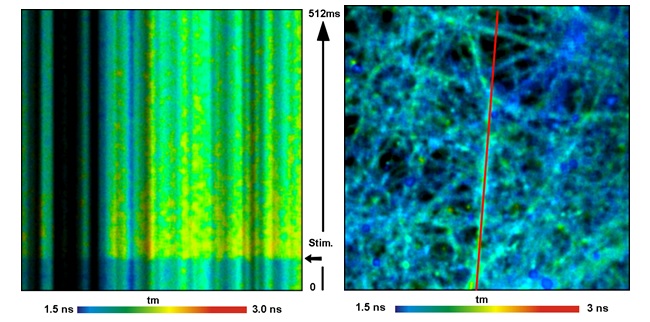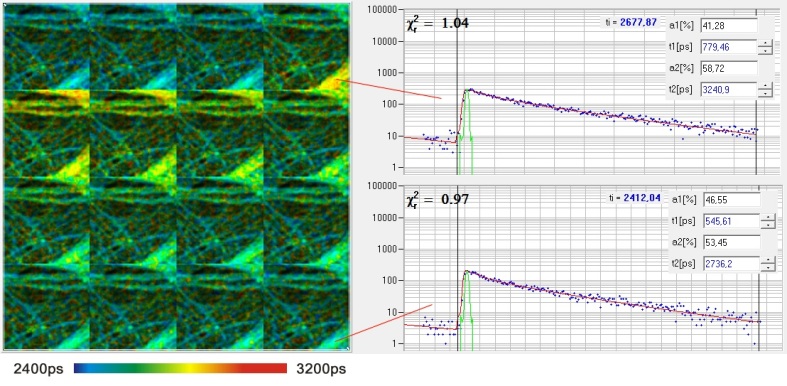Transient changes of the Ca2+ concentration in live neurons have been recorded by the Fluorescence Transient Lifetime Scanning (FLITS) and and the Mosaic FLIM functions of the bh TCSPC FLIM systems. FLITS is based on the build-up of a photon distribution over the distance along a line scan, the times of the photons after the laser pulse, and the times of the photons after a periodic stimulation of the sample, temporal mosaic FLIM on the buildup of a photon distribution over the coordinates of a fast repetitive x-y scan, and the photon times after the laser pulses and the stimulation pulses. For the commonly used scanners the time resolution is about 1 ms for FLITS and about 40 ms for temporal mosaic FLIM. For more details please see application note ‘bh FLIM Systems Record Calcium Transients in Live Neurons‘ and bh TCSPC Handbook.
FLITS of Ca2+ transients in live neurons. Left: FLITS image. Middle Left: FLIM image taken after the FLITS recording. Red lines indicates position of FLITS scan. Middle Right and Right: Temporal mosaic FLIM of the Ca2+ transient in cultured neurons after stimulation with an electrical signal. The time per mosaic element is 38 milliseconds, the entire mosaic covers 2.43 seconds. Experiment time runs from upper left to lower right. Photons were accumulated over 100 stimulation periods. Recorded by Zeiss LSM 7 MP and bh SPC-150 TCSPC module. Data courtesy of Inna Slutsky and Samuel Frere, Tel Aviv University, Sackler Faculty of Medicine.


